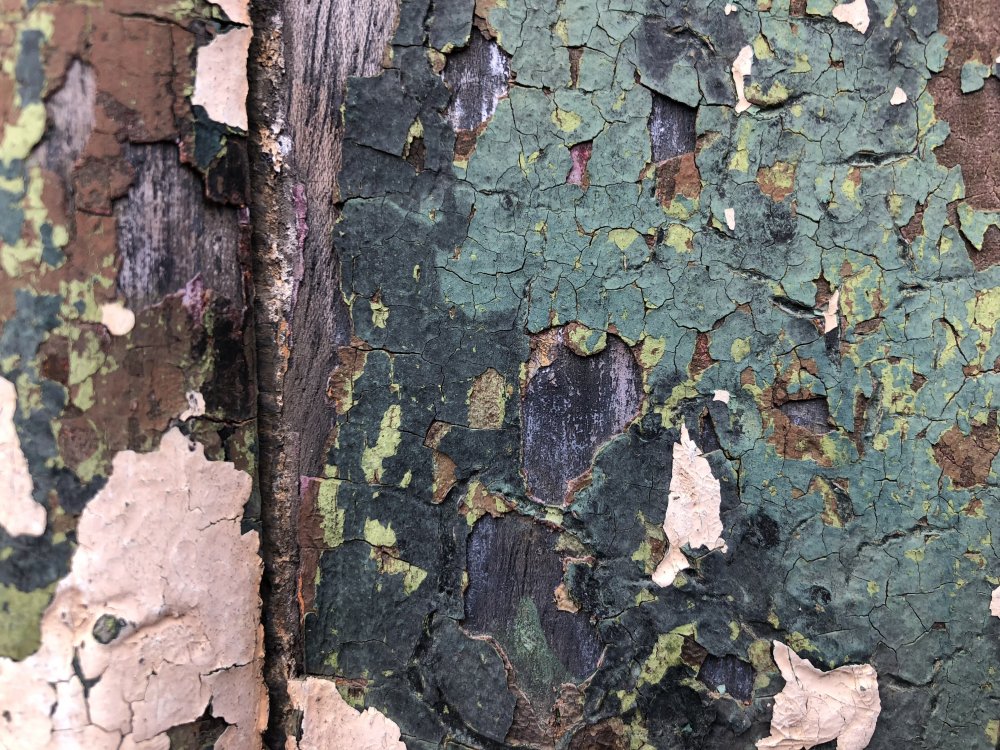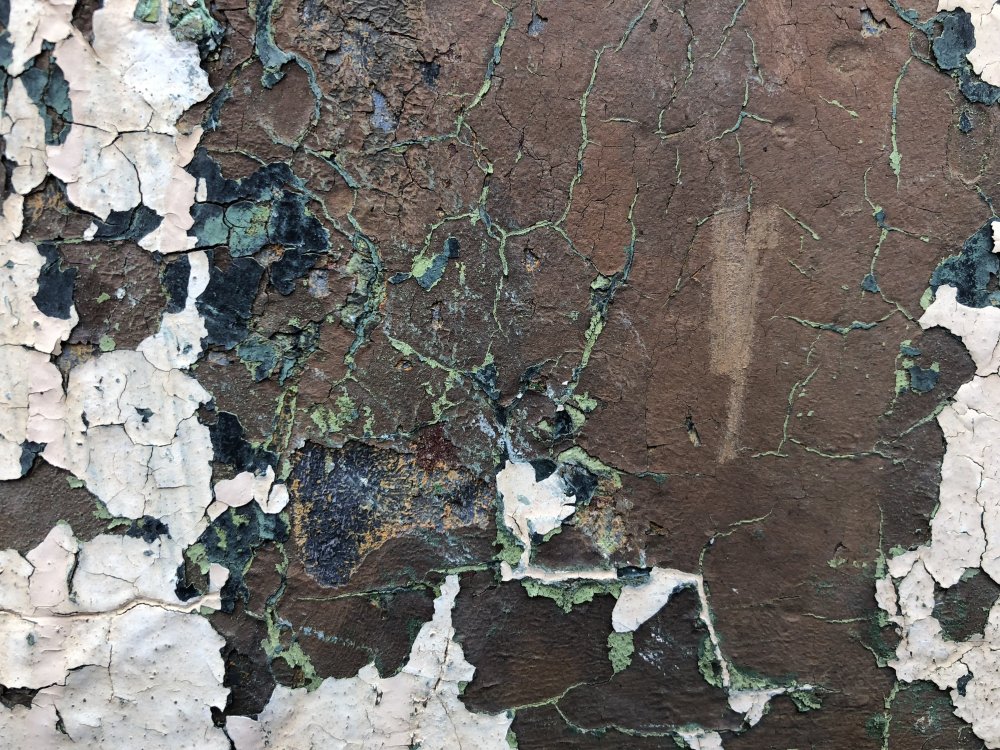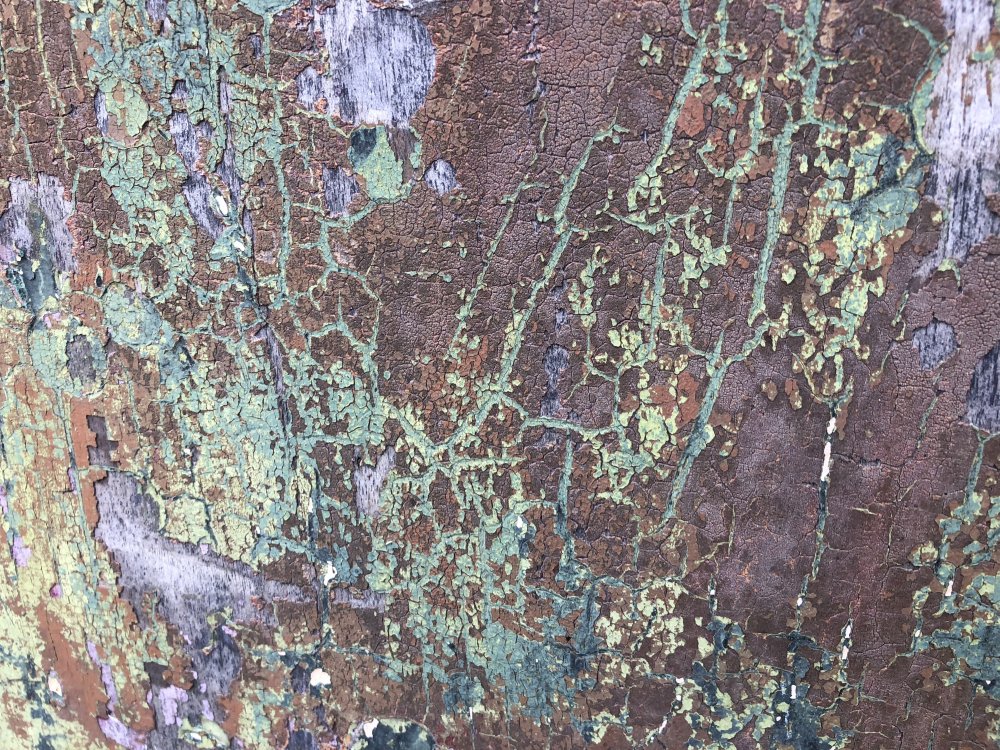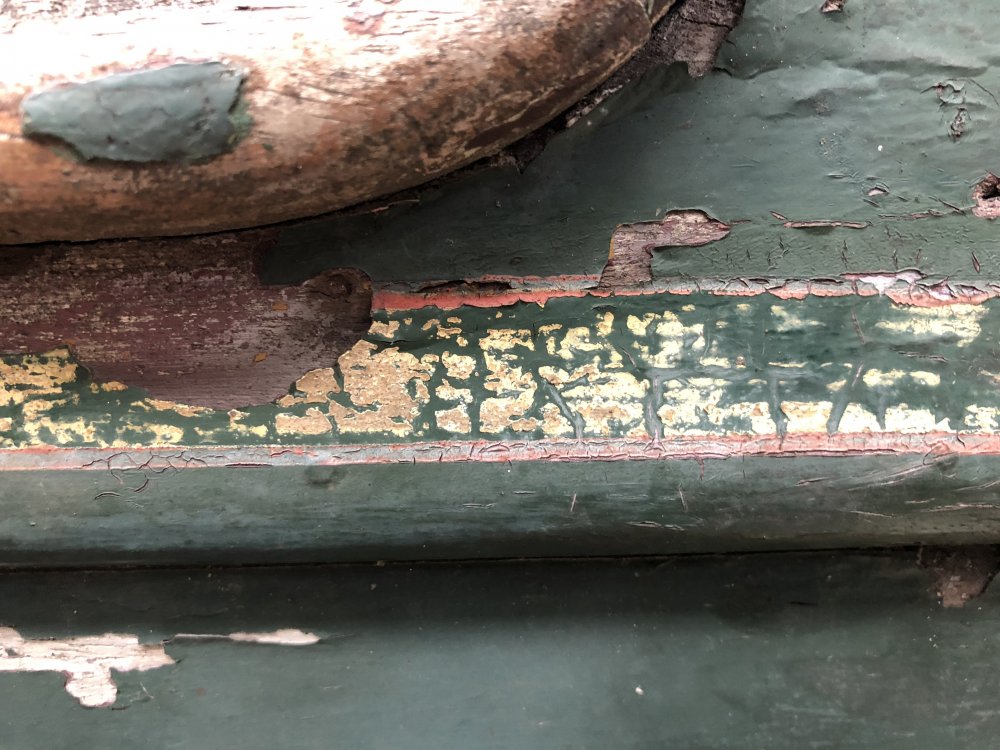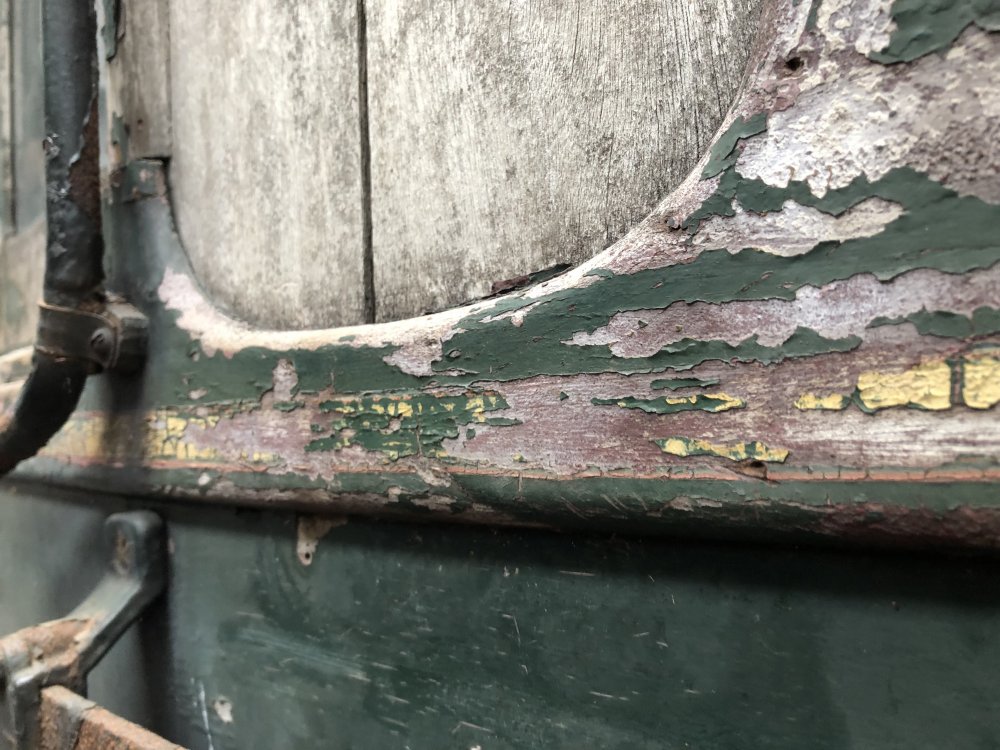-
Posts
15,859 -
Joined
-
Last visited
-
Days Won
393
Content Type
Profiles
Forums
Events
Gallery
Everything posted by jhb171achill
-
Superb pic! So, above, we’ve pics of the light green with and without lining. Another thing I forgot to mention was that flying snails tended to be added WITH the lining, but as seen above, not when there was no lining. Also, when all-black, sometimes the lettering style was as above, with a large central number on the side. Otherwise, smaller numbers low down at each cab end, with a CIE “roundel” (white letters, tan “broken wheel”) in mid position on the sides.
-
Yes - I'd forgotten! I was about to start going through old Irish Railway News journals to see what exact details were to be had; memory suggests a lot. However - broadly speaking.... the experimental "original" black'n'tan on A6, about 1961, was just that - experimental. The style of lettering font is much thicker than what had been on green and silver locos before, and all the variations afterwards. The white line was different too. In normal day to day traffic, it's like this. LIVERY 1 All over silver, bogies and roof included. No black. Lettering, numerals etc. in light "eau-de-nil" green (not black, as sometimes seen on models). The As and Cs were all delivered like this. By 1959 or so, repaints in green were starting as the silver weathered spectacularly badly, as one might expect; an A photographed beside an 1879-era shabby J15 in 1960 would have looked way more tatty than its older cousin. LIVERY 2 Light green (post-'55 shade). In some cases they had a waist-level eau de nil line, in other cases not. Snails and lettering eau de nil (not white or yellow, as occasionally seen on models). Some received the dark green. I am unaware of a single dark green example which did NOT have the waist line, though if anyone can produce evidence of this, I'd be interested to know. All over plain green would have looked exceptionally dull and would have been made worse by dirt and oil stains. As on the light green, eau-de-nil waist line and numerals etc. LIVERY 3 In the initial stages of black'n'tan, full waist high tan was applied. This is not to be confused with the LATER high tan, applied to some locos but not all, after re-engining. It is probable that not all locos received this, as the all-black (with white flashes on the ends) was started soon after. So, by 1963-6, most are all black, many having come to this straight from green. A few are high-tan sides. LIVERY 4 All-black with yellow patches on the ends. This seems to have appeared about 1964 or so (would need to check date) and not all locos were treated. Thus, by the late 60s when the re-engining programme started, almost all were black, with or without the yellow patch. Numerals on the yellow patch were always black. LIVERY 5 / 6 Once fitted with GM engines, and re-designated AR class, a FEW got the high sided tan; but most got the low band of tan. As mentioned above somewhere, this seemed to match the other locos. The dirt and oil stains were nothing like as bad as in Crossley engined days. LIVERY 7 Supertrain. Orange and black, no white lines, CIE "roundels" on ends ONLY. Initially, numerals on the ends were white shaded orange, but the shading disappeared quickly, replaced by plain white. LIVERY 8 Post 1987, the "Tippex" livery came in. Same orange, same black, same paint style, but with white lines above and below the black added. Given budgetary constraints at the time, the advent of IE didn't herald a total new livery - they just amended what they had with the white lines, hence the name "tippex", invented by someone at Inchicore. This was to imply that the new IE couldn't afford anything to paint locos except a bottle of Tippex, a correcting fluid in common use in those times. During this time, occasional livery variations occurred. It was by no means uncommon to see a loco still in the old CIE "Supertrain" livery, no white lines - but a new IE logo on the sides and / or ends. I have a pic in "Rails Through the West" of a loco somewhere between Ennis and Athenry with a CIE logo on the front and an IE "set-of-points" on the sides! They never survived to get the large "Three-Pin-Plug" IE logo. With considerable overlaps, to determine which engine switched from one livery to another at what time, there appears no complete database which shows this. I've seen photos of (FILTHY!!) silver ones in 1961/2, which would have gone straight to black. In the mid 60s, there's still one in green, and the others are variously in all-black, black with yellow end, and probably one or two with the high tan sides. IRM will presumably study photos of the various numbers they want to model, with whatever information is available on when the subject of the model went from one colour to another. Exact precise dates won't be available for all sixty of them, I'm sure. And in all reality, it's probably serious nit-picking to expect that! I wouldn't, even as a "livery freak"....! (Will Glenderg do one in Donegal red, I wonder?)
-
I love the light weathering on the locos. It absolutely transforms the realism of anything on rails. Very realistic!
-
I had a massive narrow gauge empire in the attic for 14 years. Far from not having any scenery, it never had any buildings, nor even platforms! Boards and track. Some people are happy with that, as operation is their interest. I wasn’t happy with it - I wanted full scenery. But I never got round to it, and now all the stuff is sold bar one scratchbuilt loco which I kept. 009 is gone; 00 is in progress.
-
Very very few had the “high band” orange / tan. I think no more than 2 / 3 / 4. And I don’t know if A39R was one of them. The lower band as shown on A3R above was standard. Even the “high tan” ones got that eventually. This is seriously nerdy, and I wouldn’t even mention it but for the first cveprional degree of accuracy on the IRM models. The font used on the “R” on A3 is not quite right, nor is that used on the preserved A39 and C231. Refer to photos for the correct font, or the preserved G613, G617 and the two “E”s, all on the DCDR.
-
The dark green would have replaced the silver and further research seems to confirm it was a one-off. It was not dark green previously, and no other “A” was. Thus, no “A” was dark green in the fifties - they were all silver (or more to the point, coated in a greyish filth!). They, the Cs and the B101s were all distinctly UN-photogenic then! All three classes got the light green from about 1959ish. So, if accuracy is wanted, if it’s dark green, it can only be A42, and it can only be 1963-9, and it can only be with a waist level line. Light green locos variously did, and did not have, lining.
-
There you go. It was A42, not A46. This one WAS unique, so if you're doing a dark green one, it has to be A42 itself! And it had the lining, I believe, so a dark one without lining would therefore not be correct in real life. Clarification solved, before I get round to delving through paperwork; if only all queries were resolved as easily....
-
Couldn't agree more. I will delve into the Catacombs and find out if A46 was the dark green one or not. Are you planning the one dark green and one lighter green?
-
I don't think so, Dive - a reference in an old "Irish Railfans News" implies that A46 (or whatever one it was) was the only one to get the dark green. For all railway applications (but not buses), the lighter shade was by then the norm. Nothing railway had received the darker shade in several years. I have no idea why one loco was dark green. Probably leftover paint and / or a mistake by someone in the paint shop.
-
There's forty! Serious point: a single "A" was repainted out of (filthy!) silver into the darker green (as on buses and carriages pre-'55) with a midway line. I think, but would have to check, that it was A46. The rest got the normal lighter green as on carriages. I may have read somewhere that a second had it too for a very short while, but I've yet to see any verification of this.
-
Ah, OK. Thanks!
-
No green one?
-
I will await the next 1st April announcement about a RTR turfburner in supertrain livery.... Seriously, very well done. The stand today at Raheny (good to meet so many people!) was very eye-catching too - excellent job!
-
Liked the tease: the garbled photo posted last night was of a VERY different locomotive! IRM: Put me down for two "A"s. Probably one black with yellow ends, one "supertrain".
-
M50 it is from southside..... those marathons (and cycle races!) are a scourge! Wowwww!
-
Wow!! More expensive than a locomotive! Probably viable for very large layouts only?
-
Well done. This is a masterpiece of a layout, as is Arigna. What next from this stable! A Blessington tramway branch? Courtmacsherry? Glenties? Achill........... now I'm drooling again. Mop needed. See yiz at Raheny tomorrow!
-
Brilliant, brilliant stuff! The teak coaches look just right, as I recall them. A point of detail: while the UTA put red hand roundels on a few railcars still in GNR navy and cream, older wooden coaches would only get the UTA logo if painted green. On this scale, though the UTA logo looks a bit overscale, and could at a distance look like a faded GNR crest! Excellent work as always. I have struggled to think of a reason to bring something UTA to my layout, based at the same period - but, while the location is fictitious, it's somewhere in the south - think Mallow-Waterford or South Kerry area. Maybe a visiting pigeon special!
-
It’s upside down.
-
Its couplings are compatible with the Tardis.
-
Have a look at the Worsley stuff, but also regarding drawings, the "New Irish Lines" magazine (Allen Doherty) has had drawings in the past - I think - but has certainly had very interesting articles on Irish model carriages. Look at the absolutely superb work, for example, of Colm Flanagan.
-
Irish coaches were almost without exception of Irish loading gauge. The few exceptions were a handful of ex-LNWR, LMS and other British lines - carriages brought over here and re-gauged, used primarily by the NCC and GNR. It’s almost easier to scratchbuild. If brass daunts you, try plastic sheet?
-
This may still be seen on the end of one of the MGWR six-wheelers at Downpatrick. For the eagle-eyed, note the older CIE darker green, and a badly faded later lighter green livery. I might add that in all cases, the paint shown is worn and weathered.
-
The UTA lined its loco-hauled (but not railcar) carriages in straw, which itself was lined both sides in red. On the BCDR Golfers’ Saloon at Downpatrick, one end still shows this; the only surviving example of UTA lining in existence. The width of the entire line is one inch. Here it is: It might be added that the lining on most of the Whitehead RPSI carriages (yellow and red, separately), is specifically an RPSI livery. It was never meant to be a copy of UTA - it was designed as an RPSI livery.
.png.c363cdf5c3fb7955cd92a55eb6dbbae0.png)







